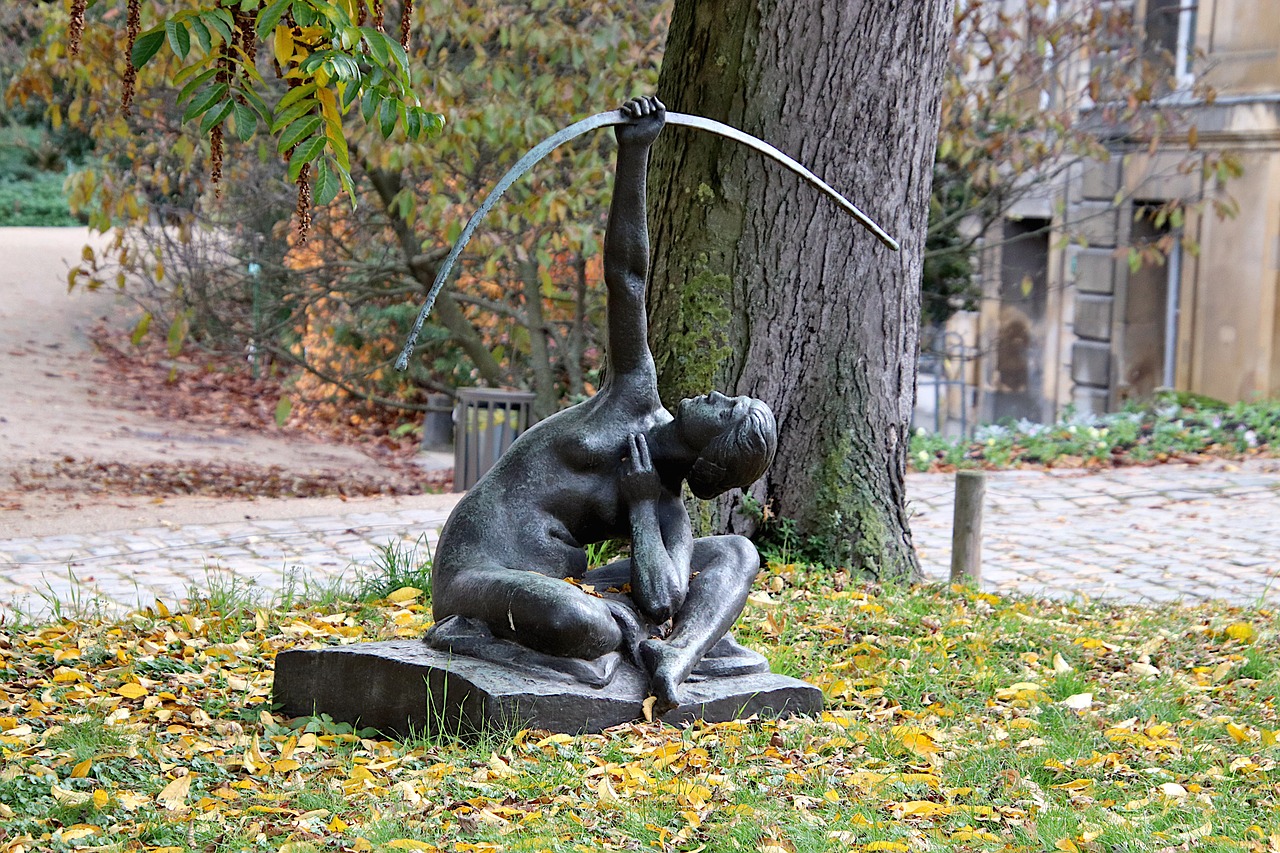Diana and the Divine Connection to Nature and Womanhood
Diana, a prominent figure in ancient Italian mythology, embodies the qualities of the moon, open landscapes, and wilderness. Her character aligns closely with aspects of fertility and childbirth, sharing similarities with the Roman goddess Juno, particularly under her title of Lucina. This divine persona finds her roots in the attributes of the Greek goddess Artemis and, over time, became intertwined with Hecate due to their resonant similarities.
The most renowned shrine dedicated to Diana was located at Aricia in a grove known as Nemus. This sacred site sat along the banks of modern-day Lake Nemi, often referred to as the “Mirror of Diana.” Within this grove, Diana was worshiped alongside a male deity, Virbius, who represented the forest and hunting. In later traditions, Virbius was equated with Hippolytus, the beloved of Artemis and the primary priest of Diana’s sanctuary, known as the Rex Nemorensis. The lore surrounding this sacred position intertwined themes of violence and survival; a runaway slave would earn the title by slaying the current priest in a duel. This ritualistic violence sparked comparisons with the Tauric Artemis and birthed fables about Orestes, who allegedly brought a statue of Artemis to this sanctuary.
Diana’s worship was largely oriented towards women, who sought her blessing for fertility and marital bliss. In Rome, a notable temple dedicated to her existed on the Aventine Hill, a sanctuary established by Servius Tullius to honor the Latin confederacy. The temple’s foundation day, August 13, marked a holiday for slaves. Here, Diana was closely associated with her brother Apollo, and during the Secular Games, she was revered simply as Artemis. However, nuances in offerings remained; while the Aventine Diana received cow sacrifices, the deer was sacred to Artemis, highlighting cultural intersections and distinctions between these deities.
Virbius: The Companion of Diana
Virbius represents an Italian deity synonymous with Hecate and often linked to Hippolytus, who was believed to have been resurrected by Asclepius. Together with Diana, Virbius presides over the woods and hunting realms.
Egeria: The Goddess of Fountains
Egeria, another vital figure, was worshiped for her prophetic abilities and her association with childbirth. She resided near a sacred fountain where the Vestal Virgins acquired water for purification rituals. Following the death of her husband, King Numa, she retreated to serve under Diana in her grove, symbolizing the intertwining themes of love, loss, and divinity.
The Lectisternium Festival
The Lectisternium, derived from Greek traditions, was a festival established by the Sibylline Books and served as a significant communal event, particularly in challenging times. This event was characterized by the display of divine images on couches and offerings of food, celebrating deities such as Apollo and Artemis.
The Tragic Fate of Actaeon
The story of Actaeon exemplifies the tragic consequences of encountering Diana in a moment of vulnerability. Trained as a huntsman, Actaeon’s fateful act of witnessing Diana as she bathed led to his transformative punishment—being turned into a stag, hunted down by his own dogs, a myth that reflects themes of voyeurism, nature’s wrath, and the tragic intertwining of human fate and divine justice.
The Transformative Power of Artemis
Though sharing her name with the great goddess of hunting, Artemis’ character signifies diverse roles beyond nature and the hunt. She embodies feminine power, purity, and the protection of young womanhood. To young girl devotees, she was a guardian of maidenhood, receiving their first sacrifices—locks of hair and garments—before they transitioned into marriage.
Symbolism and Artistic Representation
In artistic representations, the ideals of Diana and Artemis often merge, displaying her as a tall, graceful maiden with a bow, embodying both the fierce huntress and the nurturing protector. The statues from antiquity highlight her elegance and strength, enduring in cultural memory through works like the Diana of Versailles.
Apollo: The Male Counterpart
Apollo, twin brother to Diana, shared her divine domain yet evolved into a multifaceted god associated with light, music, prophecy, and healing. Celebrated throughout Greece, his temples and festivals symbolized both the wealth of nature and the artistic achievements of the Greek civilization.
As deities representing different facets of nature and society, Diana and Apollo remain vital in the cultural narratives that explore humanity’s relationship with the divine and the natural world. This harmony of male and female aspects illustrates an ancient understanding of dualities in power, influence, and reverence for fertility, wildlife, and the unyielding forces of nature.



